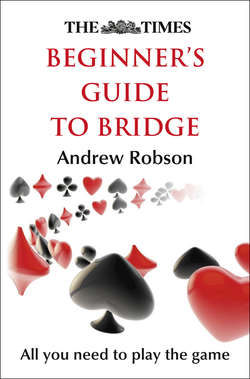Читать книгу The Times Beginner’s Guide to Bridge - Andrew Robson - Страница 49
After the lead
ОглавлениеAs you begin bridge, you’ll probably find defending to be the toughest part of the game. Your instinct may well be to throw down an ace or two, grabbing tricks quickly. This wasn’t the right strategy for the declarer (remember the hare), and nor is it the right strategy for defence. An ace is meant to catch a king, and not two low cards, as it is sure to do if you use it hastily.
Here are three of the most important factors to bear in mind when defending:
Trick target
Never lose sight of how many tricks you need to defeat the contract and stop your opponents scoring points towards a game (see pp. 221–2).
Observe dummy
Look for dummy’s weakest suit – e.g. one with three small cards.
Partner
Work out what kind of hand your partner holds: did she bid? What did she lead? Why did she lead what she led?
To remember this, ‘TOP’ stands for ‘Trick target’, ‘Observe dummy’ and ‘Partner’.
want to know more?
• The system of bidding assumed in this book is the English Standard ‘Acol’, the most prevalent in Britain. For more on different bidding systems, see p. 231.
• For more ways to make tricks, see pp. 78–89.
• For playing a deal in a trump suit, see pp. 84–9.
• For more on the opening lead and defence, see pp. 90–103.
